What is rhinoplasty?
Rhinoplasty, sometimes referred to as a “nose job” or “nose reshaping” by patients, enhances facial harmony and the proportions of your nose. It can also correct impaired breathing caused by structural defects in the nose.
What rhinoplasty can treat
- Nose size in relation to facial balance
- Nose width at the bridge or in the size and position of the nostrils
- Nose profile with visible humps or depressions on the bridge
- Nasal tip that is enlarged or bulbous, drooping, upturned or hooked
- Nostrils that are large, wide or upturned
- Nasal asymmetry
If you desire a more symmetrical nose, keep in mind that everyone’s face is asymmetric to some degree. Results may not be completely symmetric, although the goal is to create facial balance and correct proportion.
Rhinoplasty to correct a deviated septum
Nose surgery that’s done to improve an obstructed airway requires careful evaluation of the nasal structure as it relates to airflow and breathing.
Correction of a deviated septum, one of the most common causes of breathing impairment, is achieved by adjusting the nasal structure to produce better alignment.
Who is a good candidate for rhinoplasty?
Rhinoplasty is a highly individualized procedure. You should do it for yourself, not to fulfill someone else’s desires or to try to fit any sort of ideal image.
Who is a good candidate for rhinoplasty?
You may be a good candidate for rhinoplasty if:
- Your facial growth is complete
- You are physically healthy
- You don’t smoke
- You have a positive outlook and realistic goals in mind for the improvement of your appearance
What should I expect during a consultation for rhinoplasty?
During your rhinoplasty consultation be prepared to discuss:
- Your surgical goals, with regard to both appearance and breathing
- Medical conditions, drug allergies and previous medical treatments
- Current medications, vitamins, herbal supplements, alcohol, tobacco and drug use
- Previous surgeries
Your rhinoplasty surgeon may also:
- Evaluate your general health status and any pre-existing health conditions or risk factors
- The options available to you for nose reshaping
- Examine and measure your face
- Take photographs
- Discuss your nose surgery options
- Recommend a course of treatment
- Discuss likely outcomes of a nose surgery and any risks or potential complications
The consultation is the time to ask your plastic surgeon questions. To help, we have prepared a checklist of questions to ask your rhinoplasty surgeon that you can take with you to your consultation.
It’s very important to understand all aspects of your rhinoplasty procedure. It’s natural to feel some anxiety, whether it’s excitement for your anticipated new look or a bit of preoperative stress. Don’t be shy about discussing these feelings with your plastic surgeon.
What questions should I ask my plastic surgeon about rhinoplasty?
Use this checklist as a guide during your rhinoplasty consultation:
- Are you certified by the American Board of Plastic Surgery?
- Are you a member of the American Society of Plastic Surgeons?
- Were you specifically trained in the field of plastic surgery?
- How many years of plastic surgery training have you had?
- Do you have hospital privileges to perform this procedure? If so, at which hospitals?
- Is the office-based surgical facility accredited by a nationally- or state-recognized accrediting agency, or is it state-licensed or Medicare-certified?
- Am I a good candidate for this procedure?
- What will be expected of me to get the best results?
- Where and how will you perform my procedure?
- What surgical technique is recommended for me?
- How long of a recovery period can I expect, and what kind of help will I need during my recovery?
- What are the risks and complications associated with my procedure?
- How are complications handled?
- How can I expect my nose to look over time?
- What are my options if I am dissatisfied with the cosmetic outcome of my nose surgery?
- Do you have before-and-after photos I can look at for this procedure and what results are reasonable for me?
What are the risks of rhinoplasty?
The decision to have plastic surgery is extremely personal. You will have to decide if the benefits will achieve your goals and if the risks and potential complications of rhinoplasty are acceptable.
Your plastic surgeon and/or staff will explain in detail the risks associated with surgery. You will be asked to sign consent forms to ensure that you fully understand the procedure and any risks or potential complications.
Rhinoplasty surgery risks include:
- Anesthesia risks
- Infection
- Poor wound healing or scarring
- Change in skin sensation (numbness or pain)
- Nasal septal perforation (a hole in the nasal septum) is rare. Additional surgical treatment may be necessary to repair the septum but it may be impossible to correct this complication
- Difficulty breathing
- Unsatisfactory nasal appearance
- Skin discoloration and swelling
- Possibility of revisional surgery
These risks and others will be fully discussed prior to your consent. It is important that you address all your questions directly with your plastic surgeon.
How should I prepare for rhinoplasty?
In preparing for rhinoplasty surgery, you may be asked to:
- Get a lab test
- Take certain medications or adjust your current medications
- Stop smoking
- Avoid taking aspirin, anti-inflammatory drugs and herbal supplements as they can increase bleeding
Your plastic surgeon will also discuss where your procedure will be performed.
Rhinoplasty may be performed in an accredited office-based surgical facility, a licensed ambulatory surgical center or a hospital. Be sure to arrange for someone to drive you to and from surgery and to stay with you for at least the first night following surgery.
What are the steps of a rhinoplasty procedure?
Rhinoplasty surgery includes the following steps:
Step 1 – Anesthesia
Medications are administered for your comfort during the surgical procedure. The choices include intravenous sedation or general anesthesia. Your doctor will recommend the best choice for you.
Step 2 – The incision
Rhinoplasty is performed either using a closed procedure, where incisions are hidden inside the nose, or an open procedure, where an incision is made across the columella, the narrow strip of tissue that separates the nostrils.
Through these incisions, the skin that covers the nasal bones and cartilages is gently raised, allowing access to reshape the structure of the nose.
Open rhinoplasty incision across the columella
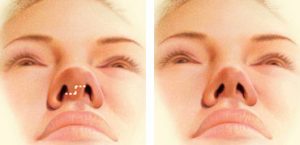
Step 3 – Reshaping the nose structure
An overly large nose may be reduced by removing bone or cartilage. Sometimes surgery of the nose may require the addition of cartilage grafts.
Most commonly, cartilage from the septum, the partition in the middle of the nose, is used for this purpose. Occasionally cartilage from the ear or rarely a section of rib cartilage can be used.
Step 4 – Correcting a deviated septum
If the septum is deviated, it can be straightened and the projections inside the nose reduced to improve breathing.
Step 5 – Closing the incision
Once the underlying structure of the nose is sculpted to the desired shape, nasal skin and tissue is redraped and incisions are closed.
Additional incisions may be placed in the natural creases of the nostrils to alter their size.
Step 6 – See the results
For a few days, splints and gauze packing may support the nose as it begins to heal. Get more information about rhinoplasty results.
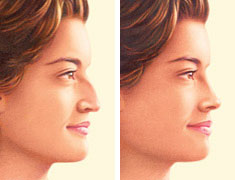
What should I expect during my rhinoplasty recovery?
During your rhinoplasty recovery, a splint and/or packing may be placed inside your nose and a splint or bandages placed on the outside to support and protect the new structures during initial healing.
While initial swelling subsides within a few weeks, it may take up to a year for your new nasal contour to fully refine. During this time you may notice gradual changes in the appearance of your nose as it refines to a more permanent outcome.
Swelling may come and go and worsen in the morning during the first year following your rhinoplasty surgery.
You will be given specific instructions that may include:
- How to care for the surgical site
- Medications to apply or take orally to aid healing and reduce the potential for infection
- Specific concerns to look for at the surgical site or in your general health
- When to follow up with your plastic surgeon.
Be sure to ask your rhinoplasty surgeon specific questions about what you can expect during your individual recovery period:
- Where will I be taken after my surgery is complete?
- What medication will I be given or prescribed after surgery?
- Will I have dressings/bandages after surgery?
- When will they be removed?
- Are stitches removed? When?
- When can I resume normal activity and exercise?
- When do I return for follow-up care?
What results should I expect after rhinoplasty?
The results of rhinoplasty surgery will be long-lasting. While initial swelling subsides within a few weeks, it may take up to a year for your new nasal contour to fully refine. During this time you may notice gradual changes in the appearance of your nose as it refines to a more permanent outcome.
As your body ages, it is natural to have some gradual changes to your face including your nose. But most of your improvement should be relatively permanent.
A healthy lifestyle and life-long sun protection will help extend the results of your new appearance.
Rhinoplasty Before & After Photos
View before and after photos of rhinoplasty procedures performed by members of the American Society of Plastic Surgeons.
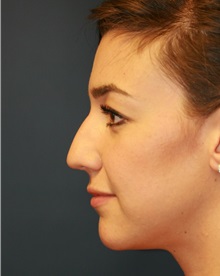 | 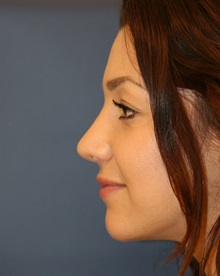 | 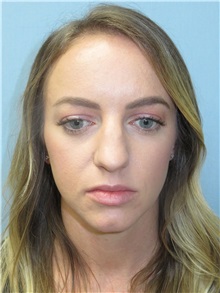 | 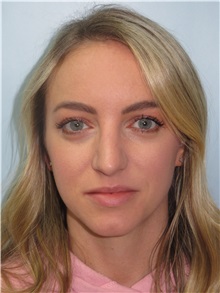 |
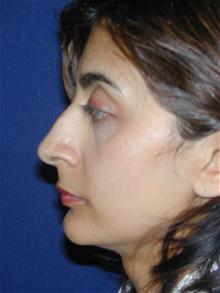 | 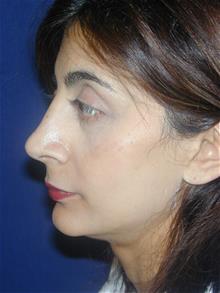 | 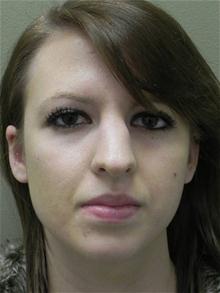 | 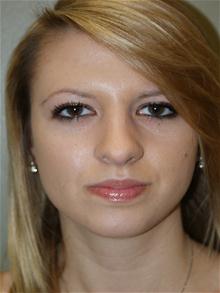 |
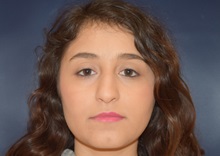 |  | 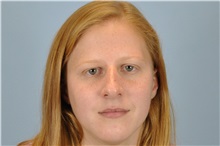 | 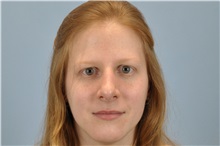 |
 |  |  | 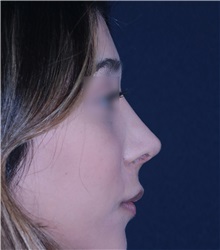 |
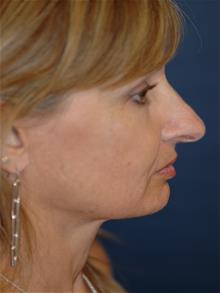 | 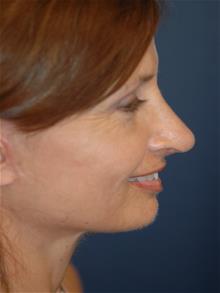 | 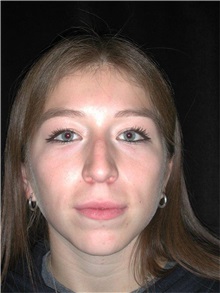 | 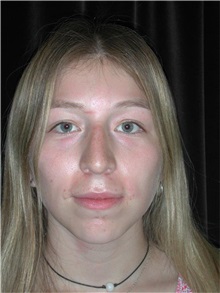 |
What words should I know about rhinoplasty?
Cartilage
Connective tissue that forms the structure of the nose.
Columella
The narrow strip of tissue that separates the nostrils.
Deviated septum
Cartilage that separates the nostrils is misaligned which may cause partial nasal airway obstruction.
General anesthesia
Drugs and/or gases used during an operation to relieve pain and alter consciousness.
Intravenous sedation
Sedatives administered by injection into a vein to help you relax.
Local anesthesia
A drug injected directly to the site of an incision during an operation to relieve pain.
Rhinoplasty
Surgery to reshape the nose.
How do I choose a plastic surgeon for rhinoplasty?
Rhinoplasty surgery involves many choices. The first and most important is selecting a board-certified plastic surgeon you can trust who is a member of the American Society of Plastic Surgeons (ASPS).
ASPS member surgeons meet rigorous standards:
- Board certification by the American Board of Plastic Surgery® (ABPS) or in Canada by the Royal College of Physicians and Surgeons of Canada®
- Complete at least six years of surgical training following medical school with a minimum of three years of plastic surgery residency training
- Pass comprehensive oral and written exams
- Graduate from an accredited medical school
- Complete continuing medical education, including patient safety, each year
- Perform surgery in accredited, state-licensed, or Medicare-certified surgical facilities
Do not be confused by other official-sounding boards and certifications.
The ABPS is recognized by the American Board of Medical Specialties (ABMS), which has approved medical specialty boards since 1934. There is no ABMS recognized certifying board with “cosmetic surgery” in its name.
By choosing a member of the American Society of Plastic Surgeons, you can be assured that you are choosing a qualified, highly-trained plastic surgeon who is board-certified by the ABPS or the Royal College of Physicians and Surgeons of Canada.
